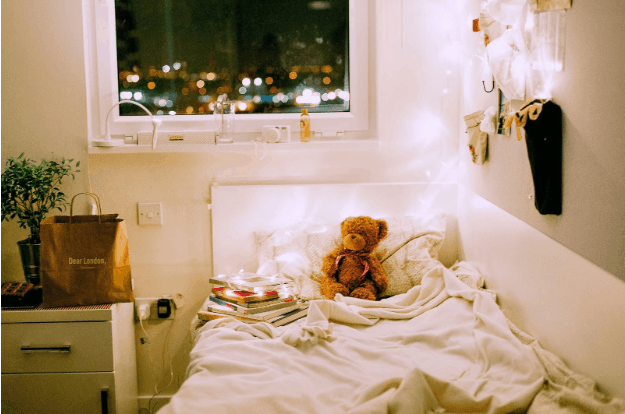Table of Contents
Autism and Sensory Issues
Autism affects an estimated 1 in 59 children in America. While symptoms of autism spectrum disorder vary from person to person, a large proportion of those affected also have a dysfunctional sensory system. In fact, 75% of children with autism experience significant symptoms of sensory processing disorder. When exposed to a stimulating environment, children with sensory issues are either under- or over-reactive. Through sensory integration therapy, children improve attention and awareness in order to reduce overall arousal. Sensory integration therapy should be administered by a professional, like those at Greater Learning. However, parents with children that have sensory dysfunction can help their child at home by creating a bedroom.
Create a Comfortable Environment
A bedroom should be, first and foremost, a place where your child can unwind and feel comfortable. If your child is affected by asthma or allergies, reducing indoor air pollution in their room is a great place to start. Air purifiers filter harmful pollutants out of the air so your child can breathe easy day and night. Furthermore, having clean air in the home keeps the whole family healthier overall. Look for an air purifier with a true HEPA filter that is specifically designed to remove microscopic allergens other purifiers can’t get.
Many children with sensory processing issues cannot handle harsh lighting. Replace lights in overhead fans and lamps with warm-colored bulbs that are less harsh and can even facilitate sleep. While the natural light that windows let in can be nice and cheerful during the day, at night, they can let in light that prevents sleep. Hang blackout curtains in front of windows so when the sun goes down, your child has a space that supports improved sleep patterns.
Clutter and mess can cause undue anxiety for children with autism. Adding plenty of storage solutions is an easy way to ensure that the bedroom stays clean and comforting throughout the week. Cubbies are perfect for a child’s room—they are simple and accessible. Parents can label boxes, tubs, or baskets that fit right into the cubbies with photos or drawings of which items belong in them, so children can easily understand organization methods and keep their rooms continuously uncluttered.
Fill It With Fun Stuff!
While the bedroom shouldn’t be so full of distractions that children can’t sleep, this is still their own little corner of the household. It’s okay to add some fun stuff that makes the room feel like their own. For instance, many parents like to outfit a sensory-friendly bedroom that incorporates colorful lights. LED bubble tubes, fiber optic lights, lava lamps, and LED projectors can create a magical atmosphere that inspires and soothes children with autism. Glow-in-the-dark stars and solar systems can also create a fun environment that incorporates sensory integration and education opportunities!
When a child has autism, their bedroom can also serve as a place for retreat when they are feeling overwhelmed. Many parents find that adding a hammock or pod-like swing in the bedroom gives children a space to cocoon and unwind when they are feeling overwhelmed. If hanging a swing is out of the question, consider a grounded option, like a sensory pea pod, or a child-sized tepee, where they can go to feel secluded and safe.
When creating a sensory-friendly bedroom for a child with autism, the most important thing is creating a comfortable space that supports their physical, mental, and emotional health. Support their physical health with an air purifier that removes indoor pollutants and allergens that instigate illness. Children with sensory processing issues have trouble with harsh lights, so replace bright and fluorescent bulbs with warm-colored versions. Having organizational cubbies in the room prevents clutter for an anxiety-free environment. Of course, the bedroom doesn’t have to be all about sleep and comfort. Having some fun touches, like sensory lights and a pod swing, give children with autism ways to address sensory processing issues while personalizing their space!
Interested in more ways to help your child with autism? Check out our online resources!
Want to work with passion-powered professionals? Contact Greater Learning LP or call us and schedule a meeting so we can help you and your family in your lifelong journey together!


0 Comments